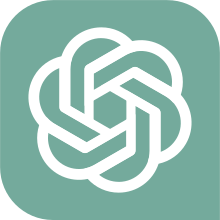GPT stands for Generative Pre-trained Transformer and is a state-of-the-art language processing model developed by OpenAI.[1] GPT is an AI program that has the ability to answer questions, format writings, and check errors in papers. It has many functions in usage amongst students, educators, and the general public. There has been an increased use of Chat GPT in the work, social, and technical fields. According to the latest available data, ChatGPT currently has around 180.5 million users.[2] This statistic is proof that the AI field is rapidly expanding and ChatGPT is no exception. Next, I will discuss how it is used in the classroom.

ChatGPT is being used by students to print out reports for their academics. To elaborate, the students use ChatGPT to write out prompts they have to make it seem like they initially wrote it. It is said that 89% used it for homework, 53% for essays, and 48% for at-home tests.[3] Students will use this to answer tests, summarize books, etc. to pass the class without having to do any work. This could be detrimental to the educational environment the people are trying to instill in our future generations. With this tool, students will not be able to learn properly and the material that they are getting covered will not be retained in their minds for when they get exposed to the real world. Wikipedia has also covered some basics of ChatGPT where it will give insight into definitions and all other relevant information.
In conclusion, OpenAI's Generative Pre-trained Transformer, or GPT, transforms language processing with its array of features. Widely used in many different industries, especially with ChatGPT's 180.5 million users, its effectiveness is evident. But as students depend more and more on technology for assignments and exams, there are worries about how it will affect education and how it can jeopardize real learning opportunities. While its accessibility enhances knowledge dissemination, careful consideration is required to balance its benefits with the preservation of authentic learning and critical thinking in educational settings.
| This is the sandbox page where you will draft your initial Wikipedia contribution.
If you're starting a new article, you can develop it here until it's ready to go live. If you're working on improvements to an existing article, copy only one section at a time of the article to this sandbox to work on, and be sure to use an edit summary linking to the article you copied from. Do not copy over the entire article. You can find additional instructions here. Remember to save your work regularly using the "Publish page" button. (It just means 'save'; it will still be in the sandbox.) You can add bold formatting to your additions to differentiate them from existing content. |
Article Draft edit
Lead edit
Article body edit
References edit
- ^ "What is Chat GPT and where did it come from? | VERSA". versa.agency. Retrieved 2024-03-13.
- ^ "Number of ChatGPT Users (Mar 2024)". Exploding Topics. 2023-03-30. Retrieved 2024-03-20.
- ^ Nerdynav (2023-10-01). "ChatGPT Cheating Statistics & Impact On Education (2024)". Retrieved 2024-03-20.